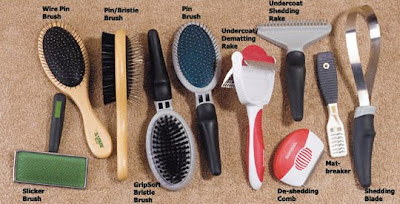Dog chews are a necessity for your pet. They help your dog meet their instinctive need to chew, can be great occupiers, and can also improve mental health. A dog with nothing to do will often get bored and get into trouble (perhaps in the form of digging or destructive behavior). In order to prevent boredom, provide your dog with the appropriate toys.
Here are a few guidelines:
1.) Avoid dog chews and dog bones that are indigestible (check the labels). Beef rawhides, for example, are a no-go! Rawhide swells once it hits the stomach and causes “gummy tummy”. If a large chunk of rawhide is ingested and your pet is unable to pass it, a vet will have to surgically remove it. Not fun, not cheap.
2.) Never offer your dog a chew that is smaller then their mouth, it could present a choking hazard.
3.) Never leave your dog unattended with dog chews. If they choke, no one is around, and if the chews are eaten too quickly, they may become impacted.
4.) “Dog proof” everything you offer your pet. Be sure to remove parts that could be chewed off and swallowed, for example, ribbons, strings or plastic eyes.
Appropriate Chews and Treat Dispensing toys:

- ACTIVE TOYS: Hard rubber toys - good for chewing and carrying around. Both Nylabone and Kong make toys that serve this purpose. Be sure to dispose of a chew when it is small enough to become a choking hazard.
- OCCUPIER TOYS: Rubber Kong toys or “Busy Buddy” (Premier) type toys - come in a variety of shapes and sizes, but all have a hollow section that can be filled with treats, biscuits or even some peanut butter (stick to the stir-in type with only peanuts and salt listed as the ingredients). Your pet has to work for the food/treats which are dispensed in small amounts; these toys may keep them busy for extended periods of time.

- COMFORT TOYS: Soft stuffed toys – serve several purposes, but aren't appropriate for all dogs (especially not aggressive chewers). Some dogs do well with a stuffed toy that is small enough to carry around. However, note that if you offer many “fluffy” items for your dog to chew on, they might be inclined to search out other fluffy things to chew on, for example: Pillows, towels, dirty laundry, etc. There can also be a choking hazard if the dog ingests the stuffing.
Remember: Occupier toys should not replace human/pet interaction. Interactive play not only enhances the bond between you and your pet, but it can help to socialize your dog and expel pent-up energy; a tired dog is a good dog! Interaction also reduces stress due to confinement, isolation, and boredom. For young, high-energy, and untrained dogs, this play can help them learn appropriate and inappropriate behavior, such as jumping or nipping.
Helpful Tips:
- Get the most out of toys by rotating them weekly and making only a few toys available at a time. By doing so, old toys seem “new” again. However, if your dog has a favorite, you may want to leave it out all the time.
- Discard toys that are starting to fall apart or break into pieces.













